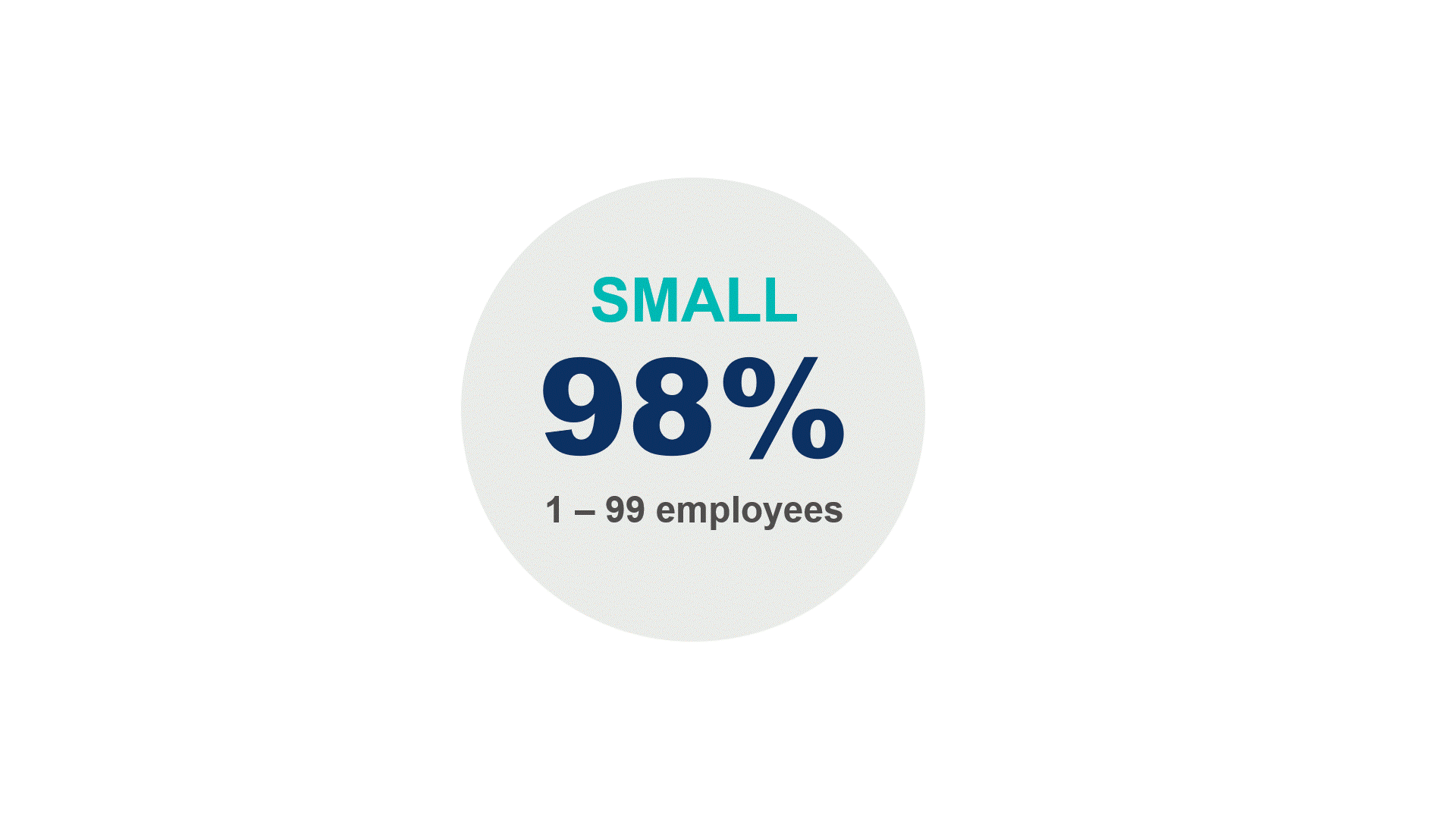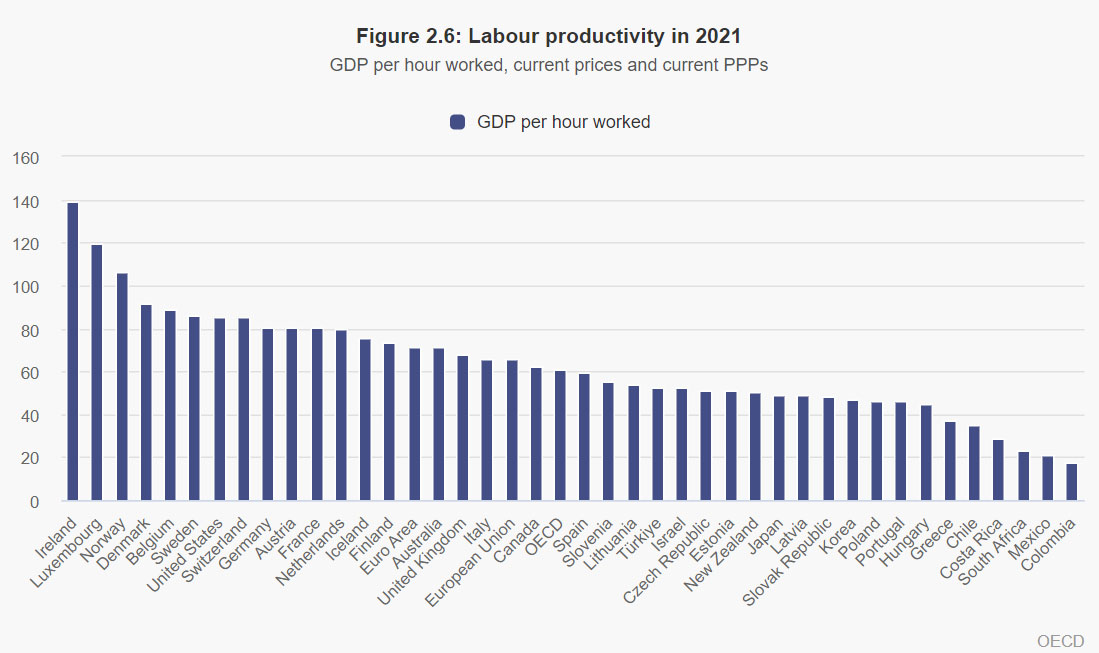Blog /
Understanding Episodic Disabilities at Work Is a Growing Business Priority
Understanding Episodic Disabilities at Work Is a Growing Business Priority
This blog was provided by Realize Canada.

This blog was provided by Realize Canada.
On March 20th and 21st this year, Realize will host the 4th National Virtual Summit on Episodic Disabilities and Employment. According to Melissa Egan, the organization’s National Lead, Episodic Disabilities, “over 400 business leaders, human resources professionals, researchers and others across Canada have registered for this year’s event already. We are on track for a record number of participants.”

Egan is not surprised. “In my work, I’m in constant contact with employees who are struggling with the uncertainty of how their episodic conditions will affect their jobs, and with employers who are trying to come to grips with an increasing number of employees or prospective employees who experience episodic disability. Business leaders, and HR professionals in particular, are looking for answers on accommodation best practices and other approaches that will help them become disability-confident employers.”
This increase in episodic disabilities in the workplace is well-documented. On December 1st, 2023, Statistics Canada released preliminary findings from the 2022 Canadian Survey on Disability (CSD). The survey found that “27% of Canadians aged 15 years and older, or 8.0 million people, had one or more disabilities that limited them in their daily activities. The rate of disability in Canada has increased by 5 percentage points since 2017.” (Statistics Canada, 2023) There is a complex array of factors driving this increase across the country, including the rising number of people reporting long-term effects of COVID infection, however, the two most significant factors Statistics Canada has identified are, “the aging population and the large increase in mental health-related disabilities among youth and working-age adults.”
Egan notes, “many business leaders have recognized this significant shift in the workforce but are still trying to figure out what it means. Current workplace practices and processes are often not adequate for these new workplace dynamics. At Realize, we conduct recurring surveys of HR professionals across the country and respondents consistently report having received little to no formal training on episodic disabilities or how to accommodate employees with these conditions.” (Realize survey report 2022).
What is an episodic disability? Episodic disabilities are chronic health conditions characterized by fluctuating periods and degrees of illness and wellness. These periods can be unpredictable in duration, types of symptoms and frequency of recurrence. For example, a person who is living with rheumatoid arthritis or depression might be well for several months, and then experience several episodes of illness in a row. Each episode may be different in terms of the symptoms experienced, how long it lasts and how intense the symptoms are. (Realize)
The unpredictability of these conditions can be hard to manage for employees and employers, but Egan points out that, “businesses that build flexibility into their HR systems and workplace practices are better able to adapt.”
The upcoming National Summit on Episodic Disabilities and Employment is an opportunity for business leaders, human resources professionals, managers, people living with episodic disabilities and others to create links between valuable research and actionable workplace solutions. According to Egan, “it is designed to catalyze workplace change through sharing best practices and highlighting key research.”
4th Annual National Summit on Episodic Disabilities and Employment
Moving from Knowledge to Action
Dates: March 20th & 21st 2024
Times: 12pm – 3:30pm (Eastern Time) each day
Place: Virtual meeting on Zoom
Registration: Free

Related News

Policy Matters: Canada’s Productivity Problem

Navigating Non-Disclosure Agreements for Intellectual Property

What We Heard: “Economic Reconciliation and Indigenous Entrepreneurship” Inclusive Growth Dialogue
Blog /
Building Canada’s Net-Zero Workforce: Report Highlights
Building Canada’s Net-Zero Workforce: Report Highlights
Canada’s transition to net-zero will help mitigate climate change and provide our country with a tremendous economic opportunity.

Canada’s transition to net-zero will help mitigate climate change and provide our country with a tremendous economic opportunity. After all, it is projected that $100 trillion US in private capital will be invested in the global clean economy between now and 2050. Jobs in the clean-energy sector in Canada are expected to grow by 3.4% annually from 2020 to 2030, nearly four times faster than the Canadian average.
Canada is uniquely poised to capitalize on this opportunity given our skilled workforce, abundance of natural resources, and significant targeted investments in clean energy and sustainable infrastructure. However, given the significant workforce challenges Canada is facing — a record number of retirements and historically low unemployment-to-job-vacancy ratio and birth rates — how can we build a workforce that will not only support this transition, but also ensure we can reap the economic benefits from it?
The new report, Building Canada’s Net-Zero Workforce, developed on behalf of the Canadian Chamber of Commerce’s Net-Zero Council, aims to answer that very important question. The report lays out the rational for and benefits and potential components of a federal net-zero workforce plan that would guide the government, industry, and workers through this pivotal shift.

The Benefits of a Net-Zero Workforce Plan
The plan will help us build a resilient workforce and deliver on our 2030 and 2050 net-zero goals and ambitions. Leveraging Bill C-50 (the Sustainable Jobs Act) as its foundation, the plan will unlock massive economic potential, including:
- A transformed workforce with opportunities to apply new knowledge and skills to climate solutions.
- A private sector that is incentivized to contribute to physical and human capital efficiency strategies.
- Sustainable job creation and economic growth built on regional and sectoral approaches, acknowledging differentiated impacts of labour shortages and the transition to net-zero.
- New opportunities for historically underrepresented groups to participate and thrive in Canada’s economic future.

Advancing a Net-Zero Workforce Plan
Closing the gap between the number of roles and the skilled workers needed in the net-zero economy can be achieved by prioritizing the following areas:
Indigenous Engagement
Distinct from related diversity, equity and inclusion efforts, it is critical to establish a baseline of Indigenous representation in certain industries. Addressing the barriers to entry will allow for a diverse set of skills and perspectives to be included during the workforce transition and align with Bill C-50’s diversity and inclusion objectives.
Lead with Industry
Strategic labour market research can identify which sectors are experiencing job loss and/or are at risk of being phased out in the net-zero transition.
Engage Education and Training Institutions
Leveraging public and stakeholder consultation, community workshops, focus groups, and industry surveys can help address gaps and provide upskilling pathways.

What’s Next?
As labour and net-zero skill shortages, climate change, demographic shifts, and net-zero commitments converge, the most effective response will be aligning current policies and strategies under one vision for the public and private sectors.
While developing this response will be a complex and long-term endeavor, there are three activities the government should prioritize:
Specify the mechanisms and processes of the Sustainable Jobs Secretariat
- Appoint a steering committee to oversee labour market research.
- Coordinate a regional body and regional advisory boards to support national and provincial collaboration.
Aid localized job support
- Pair top-down and bottom-up approaches from the federal and regional actors to develop accessible and inclusive policy.
- Foster networks for regional and industry partnerships.
Ensure the economic opportunity of Canada’s energy future
- Provide industry and businesses with resources and tools that promote understanding of the net-zero jobs transition.
- Continue to refine and develop “Made-in-Canada” plan that incentivizes investment opportunities through targeted programming, strategic finance, tax credits, pollution pricing and regulated frameworks.
Bill C-50 provides the foundation for a net-zero workforce plan that guides, supports and empowers Canada’s workforce to achieve the transition to a net-zero future, provides industry with the certainty needed to invest in net-zero economic opportunities, and positions Canada as a superpower in the clean economy.
To learn more about the Canadian Chamber of Commerce’s Net-Zero Council and their advocacy work, visit the Council’s page.
Related News

Canadian Chamber Appears Before Senate Committee on National Finance

Are You Managing Episodic Disabilities in Your Workplace?

Canada Has What the World Wants and Needs: Key Takeaways from Our Food Supply Executive Summit
Blog /
What We Heard: “Advocating for an Economy that Works for Everyone” Inclusive Growth Dialogue
What We Heard: “Advocating for an Economy that Works for Everyone” Inclusive Growth Dialogue
Despite Canada being a diverse nation, there’s still work to be done on the part of employers and government to create inclusive workplaces.

Late last year, in partnership with the Regina & District Chamber of Commerce and the Saskatchewan Chamber of Commerce, we hosted our final Inclusive Growth Dialogue in Regina, Sask. While our previous four Dialogues focused on specific topics, to conclude the series, this event covered two main themes: economic reconciliation and DEI and accessibility.
Keynote speakers:
- Cadmus Delorme, Founder and CEO, OneHoop
- Thomas Benjoe, Partner, OneHoop, and member of the Canadian Chamber of Commerce’s Board of Directors
Panellists:
- Erin Vaughan, President and CEO, Kinetic Auto Service
- Janson Anderson, President and CEO, Harbour Landing Village
- Collin Pullar, President, Saskatchewan Construction Safety Association


Here are some of the highlights from this important Dialogue:
Diversity in the Workplace
Diversity isn’t just about race but also about varied experiences and identities. Despite Canada being a diverse nation, there’s still work to be done on the part of employers and government to create inclusive workplaces. For instance, there is a need for specific government policies to promote diversity and inclusion as well as support in implementing private-public sector initiatives like the 50-30 Challenge.
The Importance of Data
Regularly collecting and reporting data on the needs and challenges of different groups and the current state of diversity and inclusion in the business community is essential to tracking progress, identifying areas for improvement, and informing effective policy updates and resource allocation.
Challenges in Advancing Economic Reconciliation, DEI and Accessibility
Two major challenges stand in the way of advancing meaningful economic reconciliation and DEI and accessibility in workplaces: the need for a mindset shift and lack of resources. Many employers are hesitant to embrace new ways of thinking and doing while others may view DEI efforts as a box to check rather than a genuine commitment. Those who do wish to implement DEI can find it costly and labour intensive, and not all businesses have the knowledge or resources to support desired changes.
Opportunities to Advance Economic Reconciliation, DEI and Accessibility
While considerable challenges remain, addressing them will open new talent pathways, resulting in positive economic outcomes. Solutions do not have to be expensive or difficult, but can look like:
- Increasing education and awareness about DEI issues to help shift employer and employee mindsets and attitudes.
- Providing tools and resources to small- and medium-sized enterprises.
- Ensuring that an organization’s actions align with its stated commitments, leading to more authentic and effective DEI strategies.
- Engaging with community leaders and organizations to understand employability and talent within underrepresented communities.
- Making continued and even mandated learning opportunities and efforts to hear and appreciate different worldviews and cultures.
- Reflect the diversity of the community through inclusive messaging and imagery in marketing.
The Role of Local Communities
Local communities can help level the playing field and better support the economic inclusion of Indigenous and other equity-deserving groups by:
- Ensuring that housing is affordable, and infrastructure is accessible to people with disabilities.
- Making public transportation and spaces more accessible and user-friendly for all community members, including those with disabilities.
- Providing resources and support for mental health and wellbeing.
- Encouraging participation in local politics and community decision-making processes to ensure diverse voices are heard and considered.
- Protecting the rights of marginalized groups and advocating for their needs at the local level.
- Demonstrating positive interactions and inclusivity in community settings.
- Establishing permanent roles focused on diversity and inclusion and planning for succession.
The Role of Chambers of Commerce
Chambers of commerce can help build bridges, strengthen relationships and increase collaboration between businesses and communities through the following actions:
- Hosting and participating in events: Organizing regular events and forums to encourage cultural awareness, ongoing dialogue and networking among diverse and/or underrepresented groups and the business community. Attending and supporting community events that celebrate diversity.
- Providing education and training: Helping employers and employees implement DEI and accessibility in their organizations through education and training on practices like inclusive hiring and diversifying suppliers.
- Creating advocacy, mentorship and partnership opportunities: Forming partnerships that focus on economic development while prioritizing DEI, advocating for policies that support DEI at local and regional levels, and establishing mentorship programs for underrepresented entrepreneurs and business owners.
- Celebrating wins: Establishing awards programs to acknowledge businesses that excel in forwarding diversity and inclusion.
About the Inclusive Growth Dialogues
At the Canadian Chamber of Commerce, we believe that diversity, equity and inclusion (DEI) are essential to fairness of opportunity, competitiveness of business, and our nation’s economic growth and prosperity. Our Inclusive Growth initiative advocates for a business environment that works for everyone, paying particular attention to groups of the population that historically and presently face barriers, preventing them from fully participating and thriving in our economy.
The aim of our Inclusive Growth initiative is to mobilize the knowledge and resources of the Canadian Chamber Network to be a strong agent for change. That’s why we co-hosted five Inclusive Growth Dialogues in 2023 in collaboration with the Canadian Chamber Network. Read the What We Heard blogs for the previous events:
Related News

Simplifying Temporary Foreign Worker Hiring with the Recognized Employer Pilot

Western Executive Council Headed East for Ottawa Meeting with Ministers

Calgary Stampede 2023
Blog /
What We Heard at The State of Small Businesses in Canada Virtual Event
What We Heard at The State of Small Businesses in Canada Virtual Event
On January 29, attendees from across Canada joined us for a very special virtual event.

On January 29, attendees from across Canada joined us for a very special virtual event, The State of Small Businesses in Canada: Navigating Click-and-Mortar Opportunities. Hosted in partnership with Amazon Canada, the event corresponded with the launch of the new report from the Business Data Lab, A Portrait of Small Business in Canada: Adaption, Agility, All at Once.
We were honoured to have Minister of Small Business Rechie Valdez join us to discuss the importance of timely data for small business owners and the federal programs available to help small businesses succeed. Following Minister Valdez’s address, Marwa Abdou, report author and Senior Research Director, Business Data Lab, broke down the report’s key findings, after which attendees heard from a panel of small business owners about their experiences navigating the complex economic and digital landscape.
Panellists:
- Sean Alexander, President and Founder of KAILANI
- Erin Bury, Founder and CEO, Willful
- Jenn Harper, Founder and CEO of Cheekbone Beauty Cosmetics, Inc.
- Abby Malchow, Manager of Small Business Partnerships, Amazon
- Rebecca Robins, RSSW, Owner, Whole Home Beauty Drywall and Painting

The Tools Are Out There
Small businesses don’t have to tackle today’s challenges on their own. Whether looking for information, financing or mentorship, Minister Valdez provided many examples of available tools designed to help entrepreneurs reach their goals and transition to a “click-and-mortar” reality.
- Canada Digital Adoption Program
- Business Benefits Finder
- The Business Data Lab’s Business Conditions Terminal
- Canada Small Business Finance Program
- Business Development Bank of Canada
Opportunity Amidst Uncertainty
With 98% of all businesses in Canada falling under the small business category and 57% of those under the micro business (1-4 employees) category, unpacking the realities of small business is vital for greater understanding and evidence-driven policy updates.


Five key highlights from the report:
- Small business is big business in Canada.
- Canadian businesses are smaller, more diverse and more resilient than we thought.
- Having an omnichannel presence is no longer a luxury but a necessity.
- While there are several bright spots in the data, more work is needed to help small businesses.
- Targeted policy should be data-driven and underpinned by diversity, equity and inclusion.
For a full breakdown of the report’s highlights, read our summary blog.
The Power of Data
The importance of timely, relevant and regional data for small businesses cannot be understated. Up-to-date insights gives Canadian small businesses the information they need to make informed decisions and improve their performance. However, it can take some work to get good at understanding data or to recruit the people who can.
Omnichannel Presence is Essential
With consumer shopping habits changing — 83% of retail shoppers conduct online research before they visit a store, and 8% shop online from a retailer with a physical location nearby — small businesses need to have omnichannel presence and an online payment solution. Our panellists’ advice to attendees is to start with a high-quality website and to research the best tools and channels for getting in front of the desired audience, whether that’s social media, Amazon or physical retailers. Small businesses looking to expand should consider increasing their capacity through cloud technology, like Amazon Web Services.
Value-Based Shopping
Value-based shopping is becoming more and more pervasive, especially among Gen Z, and that includes shopping from small businesses. According to Abby Malchow, 60% of Amazon sales are from independent sellers that are small- and medium-sized enterprises. To help users find small businesses, Amazon provides a small business search filter and badge.
Go Where Your Customers Are
Advertising has changed but some things remain the same — and that’s going where your customers are. Do some research into the available channels, traditional or digital, to figure out where you want your product to go and where your customers are. Not everyone uses the same social media platforms, and TV ads, shopping channels and traditional partnerships with relevant stakeholders can all be beneficial strategies.
Interested in attending an event like this one? Check out all upcoming hybrid, virtual or in-person events on our website.
Related News

Navigating the Skies: 6 Takeaways from Our Aviation Executive Summit

Canada Has What the World Wants and Needs: Key Takeaways from Our Food Supply Executive Summit

Canadian Chamber Appears Before Senate Committee on National Finance
Blog /
A Better Life for All: Read the 2023 Annual Report
A Better Life for All: Read the 2023 Annual Report
For the last three years, the Chamber 2025 Strategic Plan has guided the biggest transformation in our organization’s history — and these early months and years are only the beginning.

For the last three years, the Chamber 2025 Strategic Plan has guided the biggest transformation in our organization’s history — and these early months and years are only the beginning.
In 2023, we focused on delivering more of the high-quality advocacy we are known for while also launching new offerings to help Canadian businesses gain more of what they need to succeed:

Insight into markets, competitors and trends.

Influence over the decisions and policies that drive business success.

Impact on business and economic performance.
Considering the economic challenges and opportunities Canadian businesses faced last year and will face again this year, our work remains as critical as ever. We are committed in our mission to drive change, partner broadly and be the undisputed champion and catalyst for the future of business success.
Thank you for joining us on this transformative journey.
Celebrating the 2023 Wins of Canadian Business and the Canadian Chamber Network
In 2022, we launched our bold new identity and began a transformative journey to become not just the voice of Canadian business, but also the undisputed champion and catalyst for the future of business success.
That journey has continued in 2023, and our progress towards the objectives set out in our Chamber 2025 Strategic Plan has been remarkable.
Watch the video for a glimpse of where this transformative journey took us last year.
Related News

Balancing the Risks and Benefits: Insights from our Artificial Intelligence Executive Summit

Policy Matters: Economic Reconciliation

Navigating the Green Transition: Insights from our Green and Transition Finance Executive Summit
Blog /
Unveiling the Portrait of Small Businesses in Canada: Insights and Challenges
Unveiling the Portrait of Small Businesses in Canada: Insights and Challenges
The report provides a detailed look at several business ownership categories, as well as dissecting some of the challenges small businesses are facing.

While the importance of small businesses to Canada’s economy is undeniable — there are 1.3 million of them employing over 11 million people — there is still a lot that remains unknown about them. A Portrait of Small Business in Canada: Adaption, Agility, All at Once provides a unique picture of Canadian small business — one that breaks down who owns these businesses, their age, geography, and industry as well as dissecting some of the challenges small businesses are facing as they look to grow in a complex economy.
Using novel data and research, including custom tabulations from Statistics Canada, Environics Analytics and public sources, the report explores three questions:
- What is the current state of small business in Canada?
- How is the small business context evolving?
- How can small businesses be better positioned to thrive in this rapidly changing environment?
The Current State of Small Business in Canada
Despite representing 98% of Canadian businesses and employing two-thirds of the Canadian economy, the portrait of small business remains largely murky. In this report, BDL created three more detailed subcategories of small businesses (micro, scale and mature), revealing that the experiences of small businesses vary significantly.
- Micro: businesses with 1-4 employees. The most common type of firm, representing 57% of businesses in Canada.
- Scale: businesses with 5-19 employees and representing 30% of Canadian business.
- Mature: businesses with 20-99 employees and representing 11% of Canadian business.
If all businesses in Canada were sorted by employment size, the median firm would have fewer than five employees, underscoring the importance of improving our understanding of the business realities of all small firms, but especially micro.

Geography
The bulk of small businesses are in the four most populous provinces — Ontario, Quebec, British Columbia and Alberta — however, adjusting for vast population differences, there are proportionately more businesses located in Yukon, Prince Edward Island and Western Canada.

Sector
Nearly half of all small business are in the following four industries: professional, scientific, and technical services; construction; retail trade; and health care and social assistance.

Ownership
Among the traditionally underrepresented groups, women have the largest gap in business ownership relative to their population share. There are also significant ownership gaps for persons with disabilities, visible minorities and Indigenous persons. Immigrants to Canada are the only equity-seeking group with a more-than-proportional representation of business owners.
Examining trends in ownership allows us to better formulate a picture of how much work is needed to develop a truly inclusive and representative landscape of small businesses in Canada.
The Smaller the Business, the Bigger the Problems
During the pandemic, small businesses had slower business and employment growth, were more likely to face significant revenue declines and debt constraints, as well as difficulties adopting new technologies. These challenges not only continue to haunt small businesses, but further hamper their ability to cope with tumultuous economic conditions.
Slower Business Growth
Compared with pre-pandemic conditions in December 2019, the number of small businesses in Canada increased by only 2.9% while the number of large firms increased by 7.3% and medium firms increased by 5%.
Weaker Employment
Small businesses were hit hardest by unemployment and were the slowest to recover, though compared to pre-pandemic conditions, the percentage change in employment has essentially remained the same.
Decreased Revenue, Increased Business Debt
Small businesses were almost twice as likely to have experienced a drop in revenue in 2020 compared with medium and large firms and pandemic debt increases were more common for small businesses and those owned by underrepresented groups. These same groups were also more likely to report that their business could not take on additional debt. Debt constraints have consistently been a bigger concern for micro and scale businesses.
Going Digital
New technologies and the widespread use of social media are altering how businesses connect with consumers. The report emphasizes the challenge businesses face today as they are expected to meet consumers’ desire for personalized online interactions, while, in many cases, maintaining physical store locations.
Further driving home the importance of having an enticing online commercial presence, 83% of Canadian retail shoppers reported they conduct online research before they visit a store, and 8% shopped online from a retailer with a physical location nearby. By investing in their online presence and visibility, maintaining accurate and engaging digital information, and actively managing and growing their online reputations doing so, small retail businesses could effectively capture the attention of potential customers during the research phase of purchasing, and ultimately drive more foot traffic to their stores and boost sales in both digital and physical domains.
Future of Small Business in Canada
Small businesses are a major contributor to Canada’s economy, but they are also often more vulnerable to economic downturns and technological shocks — both of which are a constant in our world. Amidst this reality, demands on small businesses to adapt and innovate alongside Canada’s wider green and digital transitions will only intensify. Ensuring that adequate financial, operational and regulatory support measures boost the resilience of small businesses — especially micro and scale — is critical.
The lessons learned from analyzing the data in this report reiterate how government support is fundamental to the survival of small business and to ensuring their inclusive recovery and growth.
For more insights on the state of small business in Canada, read the full report.
Related News

Small Business Month 2023 – Our Chamber Network’s Testimonials

Understanding Episodic Disabilities at Work Is a Growing Business Priority

Canadian Chamber brings net zero recommendations to Senate Energy, Environment and Natural Resources Committee
Blog /
Policy Matters: Canada’s Productivity Problem
Policy Matters: Canada’s Productivity Problem
Productivity is an essential component of economic prosperity and linked to our standard of living.


Alongside inflation and interest rates, you probably noticed a lot of political conversations and media attention around Canada’s productivity in 2023. It’s an important topic because productivity is an essential component of economic prosperity and linked to our standard of living. Unfortunately, Canada’s productivity has decreased for 11 out of the past 12 quarters.

What is Productivity?
Productivity is measured by gross domestic product (GDP) created per hour worked. The more GDP created per hour, the higher the country’s productivity. According to OECD data for 2022, we produce $1.13 USD in GDP every minute. Compared to some of our fellow G7 nations, like France ($1.39), Germany ($1.45) and the United States ($1.50), or even the G7 average of $1.31, we certainly have room to improve.
Another way of looking at productivity is by inputs and outputs. Inputs are everything that a business needs to complete a task or create a product, and includes labour, equipment and supplies. An output is the result of the inputs, whether that’s a car, a software update or a kilogram of beef. A business’s productivity increases when it produces more or higher-value outputs with the same amount of inputs.
The adoption of remote work and the amazing potential of artificial intelligence were supposed to unlock a productivity boom, but the hype has yet to show up in the statistics. While Canada did experience a spike in productivity in the summer of 2020, we have since returned to 2016 levels.
Considering that we work more hours than in many other advanced economies, rank top in the G7 for people with college or university credentials, and lead in artificial intelligence innovation, our productivity should not be stagnant. So, what’s going on?

Barriers to Productivity
There are several factors that influence our poor productivity performance:
Skilled Labour Shortages
Shortages of qualified personnel can hinder productivity and right now Canada’s facing a growing demand for skilled workers across industries. This need is particular prevalent in fields requiring specialized skills, such as advanced manufacturing technologies, mining and agriculture.
Transportation of Goods
Canada is a large country and getting goods to and across provinces isn’t always easy for a couple of reasons: red tape that makes interprovincial trade difficult and frequent breakdowns in trade and transportation infrastructure because of extreme weather like floods, fires and snow, or weeks-long strikes. Such disruptions — preventable or not — interrupt the supply chain and increase the costs of goods.
Lack of Competition
Canada’s barriers to foreign competition are among the highest in comparison to other economically advanced countries. But without sufficient competition, companies with poor productivity are allowed to fill the market. In Canada, 5-7% of businesses qualify as zombie firms — businesses older than 10 years that would be insolvent if not for a constant infusion of new capital, often from the government. This business climate does not push our entrepreneurs to excel or our businesses to innovate.
High Proportion of Small Businesses
Canadian small and medium-sized enterprises (SMEs) are an integral part of our economy, accounting for 98% of all businesses. However, they are less productive than their counterparts in other countries and Canada’s larger companies. Why? Two significant reasons are a) a reliance on ineffective methods; and b) the slow adoption of technology and AI.
Ineffective Methods
Most SMEs continue to rely on less effective methods for improving productivity. A 2023 economic study by Desjardins found that commonly used tactics like increasing wages (82% use rate) and allowing greater flexibility with work hours (70% use rate) only have a success rate of 31% and 38% respectively. On the other hand, investing in automation has an 81% success rate but only a 33% use rate.
Slow Adoption of Technology
The same Desjardins study found that digitally mature SMEs grow faster and are more resilient. Yet, only 6% of Canadian businesses across industries plan to adopt AI in the next 12 months, according to the Business Data Lab’s 2023 Q1 Canadian Survey on Business Conditions Report.
While there are many organizations across industries making great strides in technology adoption, in general, sectors with a large share of SMEs, like agriculture and forestry, construction, and real estate, are among the least likely to adopt new technology.
- Only 3% of agriculture and forestry and construction businesses and 6% of real estate businesses plan to adopt AI.
- Only 3% of agriculture and forestry and real estate and 4% of construction businesses plan to move operations online.
- Only 3% of construction businesses and 4% of real estate businesses plan to automate tasks.
However, we can’t talk about SMEs without recognizing the productivity barriers they face too.
Regulatory Complexity
SMEs often face a complex regulatory environment that involves complying with federal, provincial, and municipal regulations. Navigating these regulations can be time-consuming and resource-intensive, leading to delays and increased costs.
Lack of Access to Capital
Access to affordable capital is essential for SMEs looking to invest in technology, research and development, and expansion. Challenges in securing funding can limit a company’s ability to innovate, which is related to productivity (we’ll talk about that more in How to Increase Canada’s Productivity).

The Relationship between Inflation and Productivity
Inflation (another hot topic in 2023 and of great concern to businesses and consumers alike) happens when:
- Demand for goods and services is greater than the supply.
- When the production or input costs increase but outputs do not.
In either scenario, the prices for goods and services increase for the consumer, causing them to experience a “loss of purchasing power”. When income doesn’t rise with the increase in costs, their standard of living suffers.
In Canada, wages have gone up substantially, but there hasn’t been a complementary boost in productivity. This forces businesses to either lay off staff or increase the cost of outputs, feeding into the cycle of inflation.

How to Increase Canada’s Productivity
Productivity is essential to our long-term standards of living, so it’s critical that we turn things around quickly. Enabling an innovative economy is one of the best ways we can improve Canada’s productivity. Here’s what that would involve:
Strengthening Investment in Agriculture
Agriculture is one of Canada’s most economically critical sectors. Government could help improve the sector’s productivity through innovation by partnering with businesses on research, product development and the commercialization of the agri-food sector, and developing policy supports to incentivize private sector research and development investment.
Increasing Digital, Technology and AI Adoption in Canadian Businesses
Most uses of AI in business won’t be mind-blowing — but they will improve efficiency by automating certain tasks and relieving some of the administrative duties from employees. In their Toronto Star op-ed, Catherine Fortin LeFaivre, Vice President, Strategic Policy & Global Partnerships, and Ulrike Bahr-Gedalia Senior Director, Digital Economy, Technology & Innovation at the Canadian Chamber of Commerce, wrote: “Imagine a residential construction company that uses AI to streamline hundreds of invoices from its trades and suppliers, giving employees more time to build homes while shedding administrative duties; or a business that uses AI for predictive maintenance of its vehicle fleet, ensuring a part is replaced before it leads to unplanned downtime and service delays.”
Invest in a Skilled Workforce
Part of increasing digital adoption is ensuring that Canada has a skilled and adaptable labour force capable of implementing and managing this new technology. Collaboration between the private sector and educational institutions and government to develop programs that train, upskill and reskill individuals will help address gaps in the workforce as will strategic, skills-based immigration programs aligned with regional labour needs and accelerating the process of recognizing foreign qualifications.
Supporting the Digital Transformation of SMEs
SMEs are often hesitant to invest in new technology due to a lack of technical skills and knowledge, challenges in hiring the skilled workers who could use this tech advantageously and difficulty getting financial support that would allow them to invest in innovation.
Government policy and supports for SMEs like the Canadian Digital Adoption Program’s Boost Your Business Technology grant are an integral part in helping SMEs overcome the barriers to adopting new technology and innovating their processes.
Streamlining the regulatory processes can help reduce the burden on SMEs, while clear and efficient regulatory frameworks can minimize compliance costs and administrative hurdles.
Ensuring Intellectual Property Protection
Intellectual property (IP) rights are a measure of innovation, which is linked to productivity since innovation is the significant improvement of a product, system, or process. And as mentioned before, improving productivity includes producing better, higher-quality outputs, not just more.
Yet, Canadian companies frequently transfer the patents for their inventions to foreign companies. As Daniel Schwanen, Vice President of Research at the C.D. Howe Institute, wrote in a 2021 letter to Ontario ministers, “…Canada is a research- and ideas-producing economy, that sees relatively few of the ideas generated here (or poaching those generated elsewhere) commercialized by Canadian firms.” As a result, the inventors don’t get the profits from their inventions.
Ensuring robust, reasonable, and reliable intellectual property protection for innovative products will give innovators the confidence to invest significant resources into R&D over many years, eventually paying into our productivity levels.
Increasing R&D Investment
Out of the G7 countries, Canada is second to last in terms of percentage of GDP spent on research and development. As written in a previous Policy Matters, investing in R&D is integral to equipping, attracting and retaining talent, and driving the innovation that allows Canada to stay competitive in a global market. Without sufficient investment in research and development, companies and countries face economic decline. Canada needs a research and development ecosystem that supports the talent and technology that can respond to urgent and emerging issues and areas of opportunity for economic growth.
We can’t change our productivity levels overnight, but it’s too important a factor in standard of living and our collective ability to pay for the things we want, including public services, to not prioritize.
Related News

Simplifying Temporary Foreign Worker Hiring with the Recognized Employer Pilot

Bridging Opportunities for Women Entrepreneurs

Advancing Canada’s Economic Competitiveness: The Chamber’s Alex Gray’s Addresses the House of Commons Standing Committee on Finance
Blog /
What We Heard: “Economic Reconciliation and Indigenous Entrepreneurship” Inclusive Growth Dialogue
What We Heard: “Economic Reconciliation and Indigenous Entrepreneurship” Inclusive Growth Dialogue
In May 2023, we hosted an Inclusive Growth Dialogue on the topic of “economic reconciliation and Indigenous entrepreneurship.”

In May 2023, in partnership with the Leduc, Nisku and Wetaskiwin Regional Chamber of Commerce, we hosted an Inclusive Growth Dialogue on the topic of “economic reconciliation and Indigenous entrepreneurship” in Nisku, Alberta. The Inclusive Growth Dialogue opened with a lively panel discussion, featuring:
- Danielle Baptiste, Owner, Sage Beauty
- Darryl Addison, General Manager, SATO Canada
- Justin Bourque, President, Athabasca Indigenous Investments
- Reg Potts, Director, Partnerships and Indigenous Development, Backwoods Energy Services
- Wayne Di Lallo, Co-owner, DFW Career Services
After the panel, attendees heard from keynote speaker, Derek M. Bruno, Founder, SevGen Consulting, before breaking intro roundtable discussion groups to further explore what they had heard.


Here are some of the highlights from this important dialogue:
Economic Reconciliation
In the process of economic reconciliation, it is important to recognize the long-term effects of intergenerational trauma (such as the trauma endured in residential schools) on Indigenous communities and acknowledge its significance.
Economic reconciliation requires:
- Acknowledging existing challenges faced by Indigenous communities.
- Including Indigenous communities in economic activities.
- Recognizing treaty and aboriginal rights.
- Reframing economic systems to align with Indigenous cultural frameworks.
- Building partnerships between organizations and Indigenous communities for long-term benefits.
- Supporting Indigenous communities in terms of training and employment opportunities.
- Educating the public about Indigenous cultures, histories, and issues.
- Developing the northern regions of Canada.
- Investing in teachers, elder care programs, critical infrastructure, and community development.
Barriers Experienced by Indigenous Individuals and Entrepreneurs
Current laws, programs and policies fail to adequately address the specific barriers faced by Indigenous populations and even create additional obstacles that impede the building of sustainable economies and the accumulation of wealth.
A significant barrier faced by Indigenous people is the racism and discrimination that hinders their access to opportunities for advancement in various aspects of life, including education, employment, mentorship and financial services.
- Indigenous individuals often find themselves confined to minimum wage jobs, with limited chance of advancement or recognition of their potential.
- Indigenous entrepreneurs struggle to access capital as well as find mentors, quality education and training opportunities.
- Indigenous businesses regularly encounter difficulties in securing loans or financial assistance from banks and other institutions.
Employer Responsibility in Promoting Reconciliation
Employers can promote reconciliation by establishing culturally safe workplaces that recognize and accommodate the diverse and unique needs and backgrounds of Indigenous employees from various nations, reserves and communities. A culturally safe workplace must include employers actively addressing and eliminating abusive, discriminatory, and stereotyping behaviours. Employers can also help Indigenous employees get recognition, training and professional growth by creating opportunities for mentorship, modifying training programs to facilitate the hiring and inclusion of Indigenous individuals, and encouraging the development of ideas and initiatives that promote workplace collaboration.
The Role of Chambers of Commerce in Economic Reconciliation
There are many positive actions chambers of commerce can take in forwarding economic reconciliation and fostering long-term relationships with Indigenous businesses and communities, including:
- Participating in community events and promoting Indigenous-based events that reverse stereotypes.
- Hosting training, education and coaching opportunities and workshops.
- Highlighting the success stories of Indigenous communities’ leaders and sharing.
- Advocating for reducing barriers in accessing grants and funding for Indigenous entrepreneurs and businesses.
- Establishing partnerships with Friendship Centres and collaborating with Indigenous communities to create mastermind groups, share information, and build bridges of support.
It is critical that chambers adopt the reconciliation practices they promote by hiring Indigenous employees, increasing the representation of Indigenous groups on boards of directors and providing training and coaching for and about Indigenous communities and representation.
The Canadian Chamber of Commerce’s Commitment to Reconciliation
In the spirit of reconciliation, the Canadian Chamber of Commerce is committed to building respectful relationships that support Indigenous rights and improve business opportunities for Indigenous peoples. For a number of years, we have had the Canadian Chamber’s Indigenous Affairs Policy Committee, mandated to examine practices that reinforce relationships between Indigenous and non-Indigenous businesses and communities. The Committee advocates for legislation, regulation, and policy which support opportunities that grow Canada’s economy, respect the rights of Indigenous people, advance economic reconciliation and align with the United Nations Declaration on the Rights of Indigenous People.
About the Inclusive Growth Dialogues
In collaboration with the Canadian Chamber Network, we co-hosted five Inclusive Growth Dialogues in 2023. These dialogues provide an opportunity to identify challenges and opportunities relating to the role chambers can play in advancing economic reconciliation and fostering a more inclusive business community.
The What We Heard blogs for Halifax’s Inclusive Growth Dialogue on celebrating Nova Scotia’s Black economy, and Guelph and Coquitlam’s Inclusive Growth Dialogues on employment inclusion of people with visible and invisible disabilities are ready to read!
Related News

Policy Matters: Economic Reconciliation

Ask Your MP to Support Farmers and Vote in Favour of Bill C-234

Improving Cross-border Travel at Toronto Pearson
Blog /
Driving Net-Zero Success: Highlights from the Ready to Compete Report
Driving Net-Zero Success: Highlights from the Ready to Compete Report
Canada’s ability to compete in the net-zero economy requires significant investment and commitment from Canadian businesses — but they cannot adapt alone.

The decisions made today, across all levels of government, will influence Canada’s future success in a net-zero world.
Canada’s ability to compete in the net-zero economy requires significant investment and commitment from Canadian businesses — but they cannot adapt alone. The federal government must facilitate the net-zero transition to ensure Canada’s pathway is competitive, enhances investment, creates jobs for Canadians and promotes innovation.
The Canadian Chamber of Commerce’s Net-Zero Council (NZC), in partnership with the University of Waterloo Terrametrics Research Lab, conducted research to identify investment, policy and regulatory priorities for four Canadian regions: Atlantic Canada, Ontario, Prairies and British Columbia.
The analysis focused on six key sectors: agriculture, electricity, transportation, buildings, natural resources and heavy industry. Based on the analysis, the study identified seven priorities that resonate across regions and sectors, and are critical to address if Canada is to prosper in a net-zero world:
- The need to act quickly.
- The need to increase public investment and support.
- The need to remove barriers for business.
- The need to mobilize and de-risk private investment.
- The need to prepare a net-zero workforce.
- The need to focus on Indigenous partnerships and reconciliation.
- The need to plan for regional differences and varying capacities.
Here are some of the key considerations from each of the four regional analyses.

Atlantic Canada
Renewable electricity generation is one of Atlantic Canada’s most significant challenges in its transition to net-zero. The region’s reliance on oil and natural gas as primary energy sources – and Novia Scotia and New Brunswick’s predominant use of coal for their electricity – are due in part to the rural nature of the provinces and the prevalence of offshore oil and gas drilling in Newfoundland.
Additionally, the four provinces have the highest rates of energy poverty in Canada, and costs are only expected to rise as the region begins to decarbonize their electricity grid in-line with federal net-zero targets. While affordable electricity is critical to ensure business competitiveness and increase investment in the region, there is also growing demand for renewable and net-zero electricity.
Despite a heavy reliance on fossil fuels for electricity, transportation, and other industries, Atlantic Canada is poised to develop and grow their competitive advantage in renewable energy. The region is well positioned to respond to predicted trends in slowing demand for fossil fuels by developing its capacity for on and offshore wind energy, small modular reactor (SMR) nuclear technology, green hydrogen, and hydroelectricity.

Ontario
In 2021, Ontario had the largest provincial share of farms and farm operators in the country, and many were small- to medium-sized enterprises (SMEs) whose growth, competitiveness and ability to adapt to a net-zero economy directly impacts the livelihood and wellbeing of Canadians.
Ontario farm operators have already shown leadership and willingness to implement sustainable practices made possible by sectoral innovation, federal funding and provincial regulatory changes. This demonstrated interest aligns with growing national and global demand for sustainable agri-food products throughout the supply chain. To achieve net-zero emissions and protect Ontario agricultural exports, there must be increased development and implementation of technologies that reduce the footprint of vehicles and equipment through fuel switching, increase methane capture from livestock, and use agricultural soil as a carbon capture, use, and storage (CCUS) mechanism, among others.
Significant efforts must also be directed towards protecting Ontario farmland from development, which will secure the longevity of agricultural SMEs and protect Ontario’s agri-food supply chain.

Prairies
Regulatory uncertainty and regulatory burden are limiting private sector and global investment, especially regarding oil and gas, power infrastructure, and pipelines. Regulations are being implemented without coordination and consideration of cumulative impacts on regions, sectors and industry. Investors want regulatory certainty and clear policy directives. Regulations cannot compromise global competitiveness, especially for trade sensitive industries.
Building the necessary infrastructure needed to meet net-zero targets requires changes to speed up regulatory processes. Fast tracking permitting, reducing regulatory hurdles, and streamlining provincial and federal environmental assessment processes will encourage global investments and advance major infrastructure projects more quickly. Existing regulatory processes are too cumbersome and lengthy.
Development of new natural resource-based projects must include Indigenous partnerships or be Indigenous-led. A collaborative, Indigenous-focused approach to resource development and renewable energy generation provides for own-source revenue generation opportunities for First Nation communities and businesses. The development of an energy transition workforce strategy can help ensure a skilled workforce is ready. Priority should be directed to help retrain workers in declining industries.

British Columbia
British Columbia is a well-recognized leader in establishing bold regulations for the production and sale of zero-emission vehicles (ZEVs) for passenger, medium and heavy-duty vehicles, and associated infrastructural developments. Additionally, its abundant supply of hydroelectricity provides a near-net-zero energy source.
However, investment in ZEV infrastructure varies greatly across geographies and access to ZEVs remains prohibitively expensive for a large portion of the province. If British Columbia is to fully transition from fossil fuel-reliant private vehicles to ZEVs, targeted public subsidies and private investment de-risking initiatives must be implemented to ensure equitable access to ZEV technology.
Similarly, while accelerating the adoption of ZEVs for personal and freight use will lower emissions and help British Columbia achieve its emissions reduction targets, more economic and political emphasis must be directed towards shifting consumer behaviour from private vehicles to public transportation, especially in urban areas where these systems and supporting infrastructure are already established. Doing so will relieve pressure on ZEV suppliers and infrastructure, provide more affordable and accessible options for transportation, and support a long-term shift in how individuals, businesses, and industries conceptualize transportation.
Overall, the report found that the capacity to decarbonize is not equal across the country and that the federal government must provide flexible solutions to support regional approaches, as opposed to a one-size-fits-all. For the full, in-depth analysis:
Related News

Highlights from our Executive Summit Series 2022

Cyber-defence Is a Team Sport: Key Takeaways from Our Cybersecurity Executive Summit

Getting Squeezed: New Report from the Business Data Lab Breaks Down the Effects of Inflation and Rising Costs on Canadians
Blog /
Policy Matters: Investing in the Next Generation of Skills and Technology for the Future of Mining
Policy Matters: Investing in the Next Generation of Skills and Technology for the Future of Mining
Now is the time to invest in Canada’s research ecosystem to support the talent and technology needs of all Canada’s emerging sectors, especially critical minerals.


Critical minerals are a group of 31 minerals identified by the government of Canada as playing an essential role in priority supply chains and essential economic green growth. These critical minerals represent significant economic potential in the billions of dollars, greater energy independence for Canada, and opportunities for reconciliation with Indigenous communities upon whose land many of these projects will take place.
But if Canada is to realize its vast potential and become a global leader in critical minerals, we have to start investing in our future now. While the Government of Canada has outlined an ambitious Critical Minerals Strategy, they have not laid out a focused plan to develop the top tier research talent we need to be successful. Now is the time to invest in Canada’s research ecosystem to support the talent and technology needs of all Canada’s emerging sectors, especially critical minerals.

Why Research and Development Matters
Investing in research and development is integral to equipping, attracting, and retaining talent and driving the innovation that allows Canada to stay competitive in a global market. Without sufficient investment in research and development, companies and countries face economic decline.
Unfortunately, this is what’s happening in Canada. In Q3 of 2023, GDP fell by 1.1% annualized. Instead of the expected post-pandemic productivity increase, our productivity has dropped to 2016 levels. And out of our fellow G7 countries — five of which outrank us in productivity — we are last in terms of percentage of GDP spent on research and development.
If Canada is to remain economically prosperous — and there’s no reason we shouldn’t given our natural wealth that extends beyond critical minerals — we need a research and development ecosystem that supports the talent and technology that can respond to urgent and emerging issues and areas of opportunity for economic growth.

The Feedback Loop Between Talent and Technology
As Canada is experiencing a labour shortage across all sectors, the competition for highly skilled talent is fierce.
In the mining industry, Canada’s leading companies are trying — and struggling — to recruit for jobs that require advanced skillsets (like chemists, engineers, and geologists) at the same time as industries like aerospace and automotive. This makes the need for sustained research investment even more essential as there is no surplus of highly qualified talent sitting around waiting.
But if we want Canadians to fill these critical roles, we need to build our domestic research capacity by recruiting the top faculty from around the world to train the next generation in our universities — which is exactly what our competitors are doing.
Canada’s wellbeing, prosperity, and global competitiveness will hinge ever more on how well we can nurture and empower our talented minds.
Report of the Advisory Panel on the Federal Research Support System
To prevent falling any further behind, Canada needs to fund robust opportunities for graduate and post-doctoral researchers through scientific grants and scholarships. Even if future industry professionals only have an undergraduate degree, it is still attained by training with faculty whose research is funded by grants.
By increasing support for research talent through grants and scholarships, the government can make it a more attractive proposition to get a master’s degree or doctorate in an area that will ultimately support the mining sector. Additionally, government should provide investment for graduate students to connect and network within the mining industry to better plan their studies around their workforce goals.

University-Led Innovation
Canada is a leader in mining technology, but to maintain that lead, we need university-driven innovation — like what’s happening at McMaster University.
McMaster is pioneering research that has the potential to make mining more sustainable and productive while also providing benefit to local communities. The University is a leader in vehicle electrification as well as vehicle and equipment automatization, the combination of which will lend itself to mining companies, allowing them to take lucrative risks underground without putting miners in harm’s way. This important work is made possible through research and development grants.
McMaster has also partnered with a supplier to develop a private 5G network, which has potential to connect remote mines to the outside world and give them the ability to distribute large amounts of data quickly, increasing the safety of people and the environment. The added benefit of this kind of high-speed connectivity is that it’s not limited to the mine but can be extended to local communities.
But new technology will require the people who have the skills to deploy, fix and manage it effectively. As it is the graduate and postdoctoral researchers who will design and deploy the technology that will drive innovation in the largely fragmented mining industry, Canada can spark the sector’s green transition and open up careers that rival competing sectors by creating more opportunities for advanced research.

The Current State of Canada’s Research and Development Ecosystem
In late 2022, the Government convened an Advisory Panel on the Federal Research Support System to provide recommendations on how to modernize the government’s support for academic research, with a stated goal of better supporting the full spectrum of talent Canada needs.
The panel’s report, released in 2023, found that “A coordinated and agile federal support system that is equipped to respond to the needs of the modern research enterprise as well as emerging government priorities would provide great benefits to all Canadians. That said, success in science, research and innovation that is competitive on the global stage hinges first and foremost on being able to effectively support and retain Canada’s top research talent and build a research enterprise that fosters discovery of new knowledge through investigator-initiated research.”
The report also concluded that the current research and development ecosystem lacks sufficient coordination making it difficult for our science and research community to work toward common strategic objectives and for us to stay on par with our competitors, who are investing heavily in their own research and development.

Looking Ahead
Canada is at cross-roads. It’s apparent that we can’t reach our full potential without new technology and a skilled and highly educated labour force, both of which depend on a robust and specialized research and development strategy. Investing in and strengthening the federal research support system matters immensely for Canada’s critical minerals sector.
To transform our critical minerals and larger mining industry into a global powerhouse, one that adds value to our economy, we have to respond to the investments and innovation happening in other countries. If we don’t get moving, we’re going to be left behind.
This Policy Matters was written in collaboration with McMaster University and Universities Canada, members of the Canadian Chamber’s Critical Minerals Council.

Related News

Improve Your Cybersecurity Posture in 2023

Insects Take Flight with ATA Carnet







